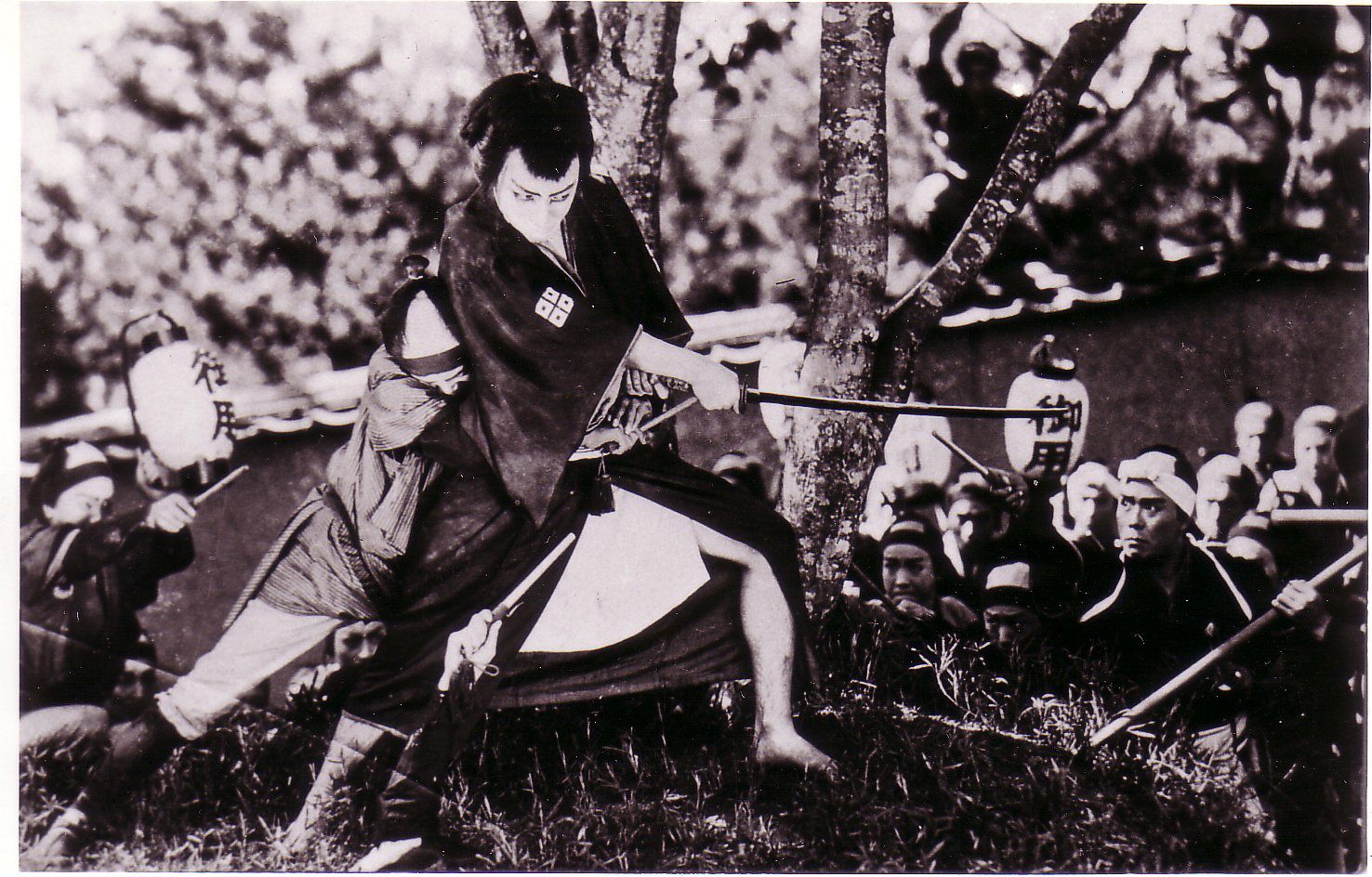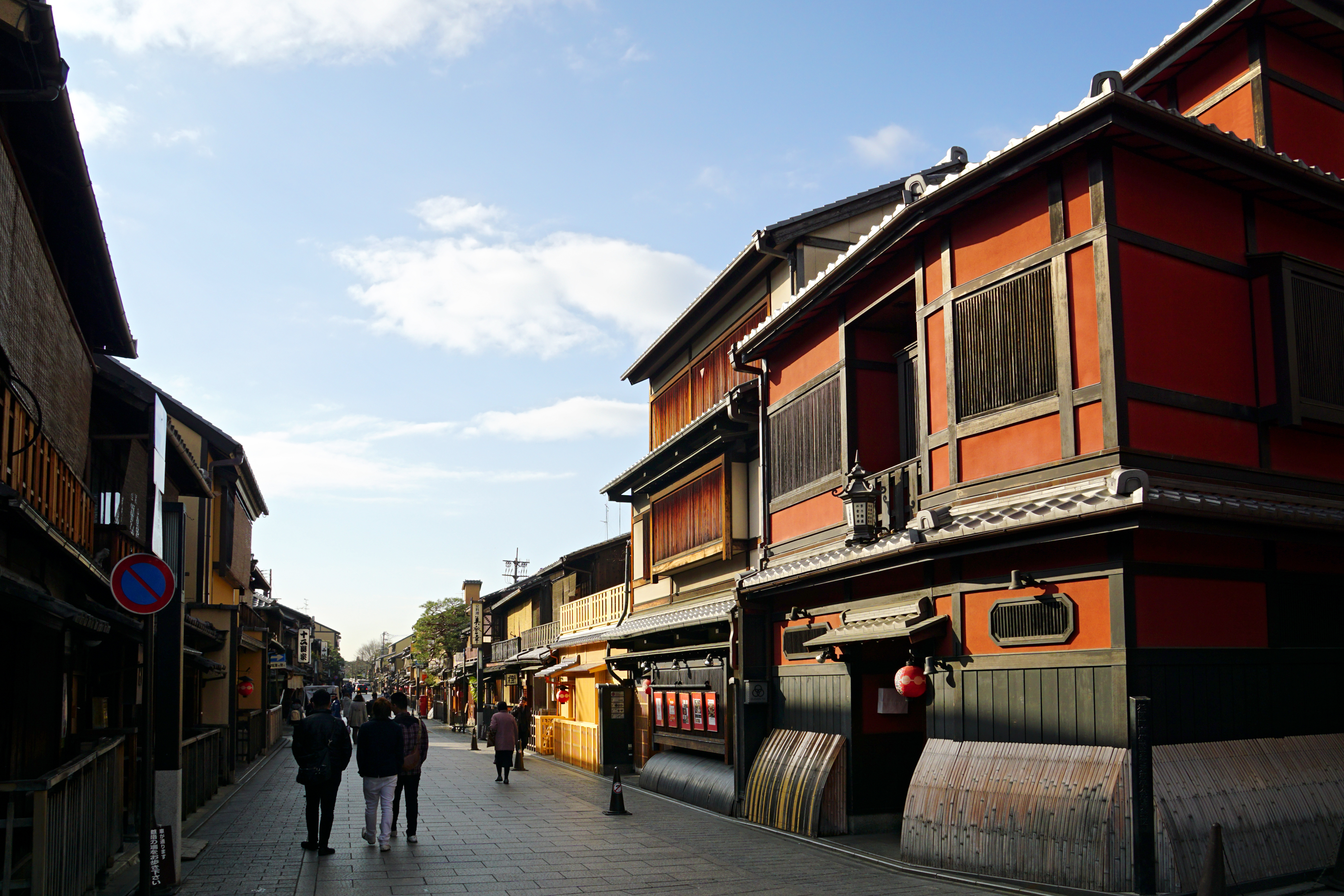|
Tsumasaburō Bandō
was one of the most prominent Japanese actors of the twentieth century. Famous for his rebellious, sword fighting roles in many jidaigeki silent films, he rose to fame after joining the Tōjiin Studio of Makino Film Productions in Kyoto in 1923. Life Early life Bantsuma, birth name Denkichi Tamura, was born in Kodenmachō, Nihonbashi, Tokyo. Bantsuma's father, a cotton wholesaler named Chōgorō, lived till the age of 71 but his mother, older brother, and sister died when he was young. He attended Jisshi Elementary School (which stands next to the former site of Denma-chō Prison where many the loyal supporters of the Emperor, whom he frequently played in his films, were deeply involved). At school, he was often the leader of the pack and was actively involved in plays. While performing in a school play, Bantsuma froze on stage, unable to recite his lines. Embarrassed, he ran off and stayed in his room, weeping for 10 days. It is said that during this time, he vowed to becom ... [...More Info...] [...Related Items...] OR: [Wikipedia] [Google] [Baidu] |
Nihonbashi
is a business district of Chūō, Tokyo, Japan which grew up around the bridge of the same name which has linked two sides of the Nihonbashi River at this site since the 17th century. The first wooden bridge was completed in 1603. The current bridge, designed by Tsumaki Yorinaka and constructed of stone on a steel frame, dates from 1911. The district covers a large area to the north and east of the bridge, reaching Akihabara to the north and the Sumida River to the east. Ōtemachi is to the west and Yaesu and Kyobashi to the south. Nihonbashi, together with Kyobashi and Kanda, is the core of Shitamachi, the original downtown center of Edo-Tokyo, before the rise of newer secondary centers such as Shinjuku and Shibuya. History The Nihonbashi district was a major mercantile center during the Edo period: its early development is largely credited to the Mitsui family, who based their wholesaling business in Nihonbashi and developed Japan's first department store, Mitsukoshi ... [...More Info...] [...Related Items...] OR: [Wikipedia] [Google] [Baidu] |
Midori Sawato
is a Japanese benshi or katsuben (silent film narrator). Life Originally from Tokyo, Midori Sawato graduated from the Department of Philosophy, Hosei University. She first decided she wanted to become a benshi in 1972, when she saw the silent film ''The Water Magician'' by Kenji Mizoguchi. She was particularly impressed with the performance as benshi of the man who would become her teacher, Shunsui Matsuda. After studying under Matsuda, Sawato made her debut in 1973. She is an active benshi who has garnered high praise through her wide variety of activities and performances in Japan and overseas. Of the ten benshi working in Japan (), Sawato is considered the most famous. Her repertoire of over 500 films includes genres as varied as contemporary cinema, historical movies and western films, for which she provides well-formed interpretations of the work. She has received many awards, including the Award for Excellence in the field of Dramatic Performance at the Agency for Cultura ... [...More Info...] [...Related Items...] OR: [Wikipedia] [Google] [Baidu] |
Orochi (film)
is a 1925 black and white Japanese silent film with benshi accompaniment directed by Buntarō Futagawa. It is the most popular and beloved film of Tsumasaburō Bandō, featuring the star at the height of his fame. Synopsis The film tells the story of a samurai who falls on hard times due to misunderstandings and explains the plots of his enemies. Such explanations superbly depict the absurdity of the samurai's unjust world, making this work pertinent even today. Analysis The kinetic sword fighting scenes masterfully performed by Bandō were novel in an age when kabuki-style, leisurely and dignified movies were the norm. This style was passed onto modern chambara films. Additionally, the sword fighting style's aesthetic value is slightly lost in ''Orochi'' due to the pace at which the fight scenes were filmed (fast-forward motion). Due to the kabuki style, the makeup on the characters transformed them into almost identical representations of ukiyo-e Ukiyo-e is a genre of ... [...More Info...] [...Related Items...] OR: [Wikipedia] [Google] [Baidu] |
Toei Kyoto Studio owned and managed by the Bureau of Urban Development, Tokyo Metropolitan Government
{{disambig ...
Toei or Tōei may refer to: * Tōei, Aichi, Japan * Toei Company, Japanese film and television production company ** Toei Animation, their animation subsidiary * , Japanese abbreviation meaning "operated by the Tokyo Metropolitan Government" **Transportation lines operated by the Tokyo Metropolitan Bureau of Transportation (TMBT) *** Toei Subway (都営地下鉄) *** Toei Bus (都営バス) ** Toei Jūtaku (都営住宅), public housing Public housing is a form of housing tenure in which the property is usually owned by a government authority, either central or local. Although the common goal of public housing is to provide affordable housing, the details, terminology, def ... [...More Info...] [...Related Items...] OR: [Wikipedia] [Google] [Baidu] |
Geisha
{{Culture of Japan, Traditions, Geisha {{nihongo, Geisha, 芸者 ({{IPAc-en, ˈ, ɡ, eɪ, ʃ, ə; {{IPA-ja, ɡeːɕa, lang), also known as {{nihongo, , 芸子, geiko (in Kyoto and Kanazawa) or {{nihongo, , 芸妓, geigi, are a class of female Japanese performing artists and entertainers trained in traditional Japanese performing arts styles, such as dance, music and singing, as well as being proficient conversationalists and hosts. Their distinct appearance is characterised by long, trailing kimono, traditional hairstyles and {{transliteration, ja, oshiroi make-up. Geisha entertain at parties known as {{transliteration, ja, ozashiki, often for the entertainment of wealthy clientele, as well as performing on stage and at festivals. Modern geisha are not prostitutes. This misconception originated due to the conflation of Japanese courtesans ({{transliteration, ja, oiran), {{transliteration, ja, oiran reenactors, the extant {{transliteration, ja, tayū, and prostitutes, who ... [...More Info...] [...Related Items...] OR: [Wikipedia] [Google] [Baidu] |
Gion
is a district of Higashiyama-ku, Kyoto, Japan, originating as an entertainment district in the Sengoku period, in front of Yasaka Shrine (Gion Shrine). The district was built to accommodate the needs of travellers and visitors to the shrine. It eventually evolved to become one of the most exclusive and well-known geisha districts in all of Japan. Gion is the Japanese translation (via Chinese ''Qiyuan'') of the Buddhist term Jetavana. The geisha in Kyoto do not refer to themselves as geisha, instead using the local term . While the term geisha means "artist" or "person of the arts", the more direct term means essentially "a woman of art". Divisions Gion houses two , or geisha districts: and . The two were originally the same district, but split many years ago. Gion Kobu is larger, occupying most of the district including the famous street Hanamikoji, while Gion Higashi is smaller and occupies the northeast corner, centered on its rehearsal hall. Despite the considerable d ... [...More Info...] [...Related Items...] OR: [Wikipedia] [Google] [Baidu] |
Cinema Of Japan
The has a history that spans more than 100 years. Japan has one of the oldest and largest film industries in the world; as of 2021, it was the fourth largest by number of feature films produced. In 2011 Japan produced 411 feature films that earned 54.9% of a box office total of US$2.338 billion. Films have been produced in Japan since 1897, when the first foreign cameramen arrived. ''Tokyo Story'' (1953) ranked number three in ''Sight & Sound'' critics' list of the 100 greatest films of all time. ''Tokyo Story'' also topped the 2012 ''Sight & Sound'' directors' poll of The Top 50 Greatest Films of All Time, dethroning '' Citizen Kane'', while Akira Kurosawa's '' Seven Samurai'' (1954) was voted the greatest foreign-language film of all time in BBC's 2018 poll of 209 critics in 43 countries. Japan has won the Academy Award for the Best International Feature Film four times, more than any other Asian country. Japan's Big Four film studios are Toho, Toei, Shochiku and Kadoka ... [...More Info...] [...Related Items...] OR: [Wikipedia] [Google] [Baidu] |
Samurai
were the hereditary military nobility and officer caste of medieval and early-modern Japan from the late 12th century until their abolition in 1876. They were the well-paid retainers of the '' daimyo'' (the great feudal landholders). They had high prestige and special privileges such as wearing two swords and ''Kiri-sute gomen'' (right to kill anyone of a lower class in certain situations). They cultivated the '' bushido'' codes of martial virtues, indifference to pain, and unflinching loyalty, engaging in many local battles. Though they had predecessors in earlier military and administrative officers, the samurai truly emerged during the Kamakura shogunate, ruling from 1185 to 1333. They became the ruling political class, with significant power but also significant responsibility. During the 13th century, the samurai proved themselves as adept warriors against the invading Mongols. During the peaceful Edo period (1603 to 1868), they became the stewards and chamberlains of ... [...More Info...] [...Related Items...] OR: [Wikipedia] [Google] [Baidu] |





